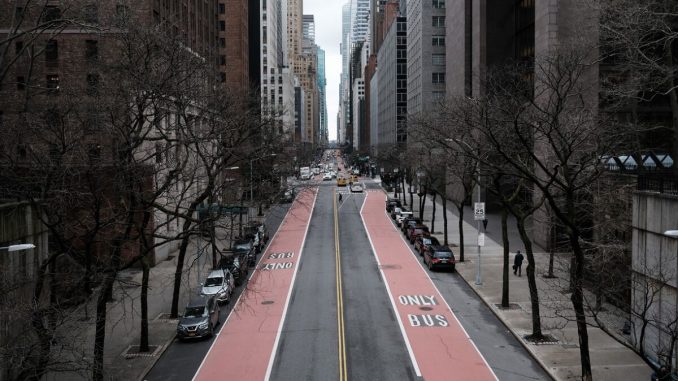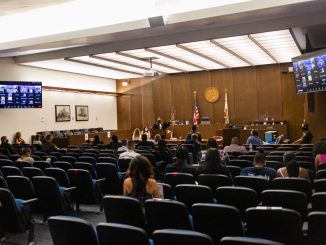

Commentary
Migration seems to be a constant in history. Migratory trends fluctuate, but they inevitably surface somewhere as human beings seek greener pastures and a better life.
A new migratory trend is emerging within our country: More people are moving out of large American cities and fewer are moving in; hence, some urban populations are starting to shrink. The potential ramifications of this trend are ominous.
Before I write about what’s at stake for cities and the people who reside in them, let’s look at the lifecycles of cities and the reasons why an increasing number of people are either exiting cities or deciding not to move into them.
The primary factors that impel the growth and development of cities are of an economic nature. I don’t mean to discount or devalue social considerations; human beings are social creatures and we crave contact with others, but without a viable economic base, cities don’t grow. In some cases, they don’t even survive. Think of the ghost towns in the Old West: Bustling communities sprang up in areas where gold discoveries were reported, only to die out and be abandoned when neither mining nor any other industry provided an ongoing economic base to sustain a human community in those locations.
Look at where major American cities (and indeed, major cities around the world) are situated. The largest tend to be found on the shores of rivers, lakes, and oceans, or other locations that give ready access to key natural resources and the flow of commerce. That’s economic reality. In our country, the emergence of heavy industry in the 19th century led to major migrations from rural areas to urban centers, driven by individuals seeking greater economic opportunities. In today’s so-called post-industrial age, populations follow technological changes. Urban areas that attracted a critical mass of workers equipped with high-tech skills have thrived, while those less successful in keeping in step with current economic trends have languished.
So, what factors are driving the current flow of people away from American cities? The consensus opinion is: COVID-19. As a recent Wall Street Journal headline succinctly put it, “The Pandemic Changed Where Americans Live.” Indeed, many American businesses and individuals, spurred by pandemic-induced social distancing, have learned how to use newer technologies like Zoom conferences to conduct business without a need for daily trips to a downtown office. Technology has, to some extent at least, broken up long-settled patterns of conducting business while increasing options for where workers reside.
At the moment, it’s too early to say if this trend is a short-term, transitory response to the pandemic (as the Brookings Institution believes), or whether the trend will continue and perhaps even gather momentum in a post-pandemic society. There is, however, another significant driver of today’s ex-urban migration. While cities require an economic base to survive and thrive, great cities offer many embellishments and people-pleasing activities that attract people to live or visit those cities, thereby expanding and enhancing the quality of life while generating additional jobs and prosperity there.
In the last year, however, the desirability and attractiveness of city living have suffered a serious blow. Riots, violence, vandalism, the wanton destruction of businesses (many of the mom-and-pop variety that represent a family’s best chance at achieving their American dream) along with increased crime and shootings, have encouraged many residents to move out and discouraged other people from moving in. There’s a simple truth here: People don’t want to live near danger. And fewer people will want to visit those cities, shop in their stores, or take in their cultural attractions. Who wants to go into a city where storefronts have been disfigured or boarded up, and where police protection can’t be taken for granted? What parents would choose to raise their kids in such surroundings?
According to the Journal article cited above, “Big cities including New York, Chicago, San Francisco and Boston saw hundreds of thousands more residents move out than in, … causing the net loss of households from migration to widen by 71 percent in 2020 from the previous year.” This exodus, by the way, preceded COVID-19. Many businesses and individuals have become fed up with high-tax jurisdictions and have been fleeing in droves. Now, urban emigration is accelerating both because of pandemic-related factors and the worrisome increase in urban violence.
Tax bases and revenues were already shrinking due to people leaving cities. As emigration increases, tax revenues will continue to shrink. This poses a major threat to affected cities. Some cities run the risk of a grim, downward-spiraling cycle taking hold.
Fewer residents will result in lower government revenues. Fewer people residing in or visiting cities means less need for restaurants, entertainment, public transportation, and so on. This, in turn, causes layoffs and closures in those types of service, translating into additional tax losses and fewer people visiting cities because of fewer amenities being available there.
With fewer tax dollars to spend, the quality of civic services—including police and fire—is likely to deteriorate. That could impel an increasing number of residents to move out. To make up for these lost revenues, we can expect desperate government officials to try to raise taxes. To the extent that they do, they will drive even more taxpayers out of their cities. What is happening currently is that higher-income residents are fleeing cities at a faster rate than lower-income people. This will accelerate the shrinkage of urban tax bases, for higher-income people pay a much higher share of taxes than lower-income people. It will also cause the “social justice” crowd to howl, because it will be lower-income people who will be left to live in newly impoverished cities.
I don’t want to overstate the case and say that the current exodus from cities will be fatal to cities. They will survive, I’m sure. But don’t be surprised if cities experiencing loss of population enter a period of stagnation and end up with much smaller populations (hence, smaller tax bases). This already has happened in some cities: See Detroit, which entered a half-century of decline in the 1960s due to the toxic policy mix of not controlling crime and constantly raising taxes.
To what extent American cities can withstand population losses, nobody can say. But if urban governments don’t find a way to re-establish a sense of law, order, and safety, people will continue to abandon and avoid those cities, greatly increasing the chances that those cities’ best days are behind them.
Put another way, what some of America’s largest and most famous cities now need more than anything else is a restoration of order and safety. The big question is: Which of those cities will have leaders emerge who are capable of meeting that need?
Mark Hendrickson, an economist, recently retired from the faculty of Grove City College, where he remains a fellow for economic and social policy at the Institute for Faith and Freedom.
Views expressed in this article are the opinions of the author and do not necessarily reflect the views of The Epoch Times.





Be the first to comment